June 18, 1889 – Rockefeller builds Giant Refinery –
Standard Oil Company of New Jersey incorporated a new subsidiary, Standard Oil Company of Indiana, and began processing oil at a new refinery in Whiting, Indiana, southeast of Chicago. The refinery, which became the largest in the United States by the mid-1890s, in 1910 added pipelines connecting it to Kansas and Oklahoma oilfields.
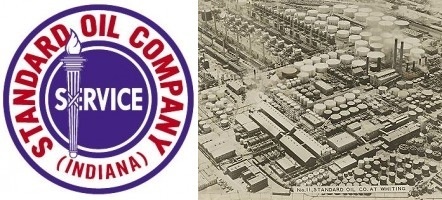
Constructed in 1889 about 15 miles from downtown Chicago, the former Standard Oil refinery in Whiting, Indiana, today owned and operated by BP, processes up to 450,000 barrels of oil a day.
When the Supreme Court in 1911 mandated the break up of John D. Rockefeller’s companies, Standard Oil of Indiana emerged as an independent company, opening Amoco branded service stations in the late 1950s. Amoco merged with British Petroleum (BP) in 1998 — the largest foreign takeover of U.S. company up to that time.
Learn more in Standard Oil Whiting Refinery.
June 18, 1946 – Truman establishes National Petroleum Council
At the request of President Harry S. Truman, the National Petroleum Council (NPC), was established by the Department of the Interior to make recommendations relating to energy issues. Transferred to the newly established Department of Energy in 1977, the council became a privately funded advisory committee with 200 members appointed by the Secretary of Energy. The NPC notes that “the NPC does not concern itself with trade practices, nor does it engage in any of the usual trade association activities.”
June 18, 1948 – Service Company celebrates 100,000th Perforation
Fifteen years after its first perforation job, Lane-Wells Company returned to the same well near Motebello, California, and performed its 100,000th perforation. The return to Union Oil Company’s La Merced No. 17 well included a special ceremony hosted by Walter Wells, chairman and company co-founder.

The Los Angeles headquarters building of Lane-Wells was completed in 1937.
In 1930, Wells and oilfield tool salesman Bill Lane developed a practical downhole gun that could shoot steel bullets through casing. Their multiple-shot perforator fired bullets by electrical detonation. After many tests, success came at the La Merced No. 17 well. By late 1935, Lane-Wells had established a small fleet of trucks for well-perforation services. The company merged with Dresser Industries in 1956 and later became part of Baker-Atlas.
Learn more in Lane-Wells 100,000th Perforation.
June 20, 1977 – Oil begins Flowing in Trans-Alaska Pipeline
The Trans-Alaska Pipeline began carrying oil 800 miles from Prudhoe Bay to the Port of Valdez at Prince William Sound. The oil arrived 38 days later, culminating the world’s largest privately funded construction project at that time. The Prudhoe Bay field had been discovered in 1968 by Atlantic Richfield and Exxon about 250 miles north of the Arctic Circle.
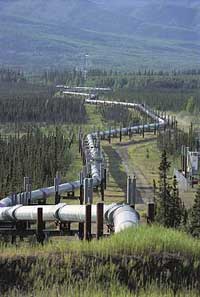
Construction of the controversial pipeline began in 1974. Photo courtesy Alaska Pipeline Authority.
After years of controversy, construction of the 48-inch-wide pipeline began in April 1974. Above-ground sections of the pipeline (420 miles) were built in a zigzag configuration to allow for expansion or contraction with temperature changes. In some permafrost areas, the supports include “heat pipes.”
Oil throughput of the $8 billion pipeline peaked in 1988 at just over two million barrels per day, according to the Energy Information Administration (EIA), adding that since 2003, “actual deliveries have been less than one million barrels per day, and averaged 483,000 barrels per day in 2022, the first year-over-year increase since 2017.”
Learn more in Trans-Alaska Pipeline History.
June 21, 1893 – Submersible Pump Inventor born
Armais Arutunoff, inventor of the electric submersible pump for oil wells, was born to Armenian parents in Tiflis, Russia. He would invent the world’s first electrical centrifugal submersible pump in 1916. At first, Arutunoff could not find financial support for his oilfield production technology after emigrating to the United States in 1923.
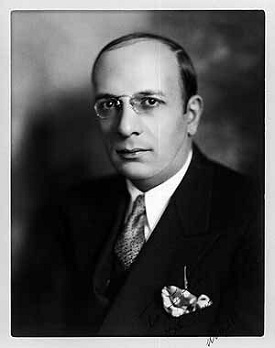
Russian engineer Armais Arutunoff invented of the first electric submersible pumps.
Thanks to help from his friend Frank Phillips, president of Phillips Petroleum, in 1928 Arutunoff moved to Bartlesville, Oklahoma, and established a manufacturing company. His REDA Pump Company manufactured pump and motor devices (and employed hundreds during the Great Depression).
The name REDA, which stands for Russian Electrical Dynamo of Arutunoff, was the cable address of the company he originally formed in Germany and now part of SLB (Schlumberger until 2022).
A 1936 Tulsa World article described his invention as “an electric motor with the proportions of a slim fencepost which stands on its head at the bottom of a well and kicks oil to the surface with its feet.”
Learn more in Inventing the Electric Submersible Pump.
June 21, 1932 – Oklahoma Governor battles “Hot Oil”
Thirty National Guardsmen marched into the Oklahoma City oilfield when Governor William H. “Alfalfa Bill” Murray took control of oil production after creating a proration board despite objections from independent producers.
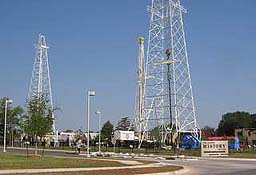
The Oklahoma History Center in Oklahoma City includes petroleum equipment on display in the Devon Energy Park, which opened in 2005. Photo by Bruce Wells.
Murray declared martial law again in March 1933 to enforce his regulations preventing the sale or transport of oil produced in excess of the quota, referred to as “hot oil.”
The state legislature passed a law in April giving the Oklahoma Corporation Commission authority to enforce its rules — taking away Murray’s power to regulate the petroleum industry. The commission had been established in 1907 to regulate railroad, telephone, and telegraph companies.
June 21, 1937 – “Great Karg Well” Marker dedicated in Ohio
Like Indiana, Ohio greatly benefited from natural gas discoveries, as evidenced by a 1937 historic marker at the wellhead, “erected in humble pride by the people of Findlay, Ohio,” to celebrate the “Great Karg Well” that revealed a giant field in January 1886.
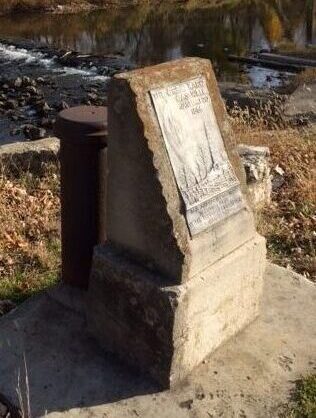
The “Great Karg Well” historic marker for a 1886 natural gas well at Findlay, Ohio. Detail of 2014 photo by Michael Baker, courtesy Historical Marker Database.
“At that time gas was simply a by-product of oil drilling, and with no way to store it they ended up piping it away for free to heat homes and drive industrial machinery,” notes the historic marker inscription at the wellhead. Many companies promoted Ohio’s natural gas supplies, which “attracted glass companies from around the world,” until the gas ran out.
Learn more in Indiana Natural Gas Boom.
June 23, 1921 – Signal Hill brings California Oil Boom
Another southern California drilling boom began when a geyser of “black gold” erupted 114 feet high at Signal Hill. The Alamitos No. 1 well, which revealed a giant oilfield, produced about 600 barrels of oil a day when it was completed.
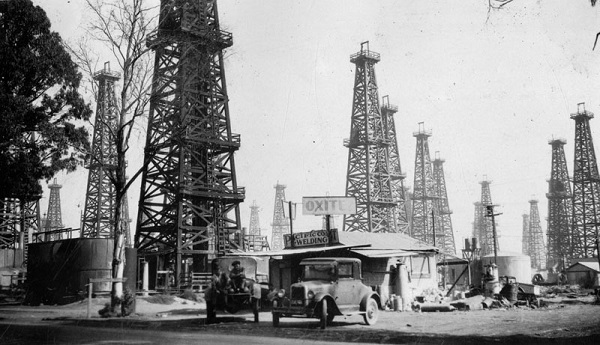
The Signal Hill oil discovery helped make California the source of one-quarter of the world’s oil output. “Porcupine Hill” and the Long Beach field produced 260,000 barrels of oil a day by 1923. Photo courtesy of Los Angeles Museum of Natural History.
Soon known as “Porcupine Hill,” the Signal Hill oilfield 20 miles south of Los Angeles produced almost 260,000 barrels of oil a day by 1923. Combined with the 1892 Los Angeles Oilfield discovery and the 1920 Huntington Beach oilfield, California produced one-fourth of the world’s oil. A monument dedicated in 1952 at Signal Hill’s Discovery Well Park has served “as a tribute to the petroleum pioneers for their success here.”
Learn more in Signal Hill Oil Boom.
June 23, 1947 – Supreme Court limits State Rights to Continental Shelf
The U.S. Supreme Court ruled California could not claim rights to the continental shelf beyond three nautical miles. Litigation had resulted from President Harry Truman’s September 1945 Continental Shelf Proclamation, which placed control with the federal government. The Supreme Court ruling on the Truman Proclamation affirmed federal jurisdiction “with respect to the natural resources of the subsoil and seabed of the continental shelf.” Similar rulings affecting Louisiana and Texas would be made in 1950.
_______________________
Recommended Reading: The Great Alaska Pipeline (1988); Artificial Lift-down Hole Pumping Systems
(1984); Signal Hill, California, Images of America
(2006); Minnesota’s Geology (1982) Tulsa Oil Capital of the World, Images of America
(2004); Oil in West Texas and New Mexico
(1982). Your Amazon purchase benefits the American Oil & Gas Historical Society. As an Amazon Associate, AOGHS earns a commission from qualifying purchases.
_______________________
The American Oil & Gas Historical Society (AOGHS) preserves U.S. petroleum history. Please become an AOGHS annual supporter and help maintain this energy education website and expand historical research. For more information, contact bawells@aoghs.org. Copyright © 2024. Bruce A. Wells. All rights reserved.



